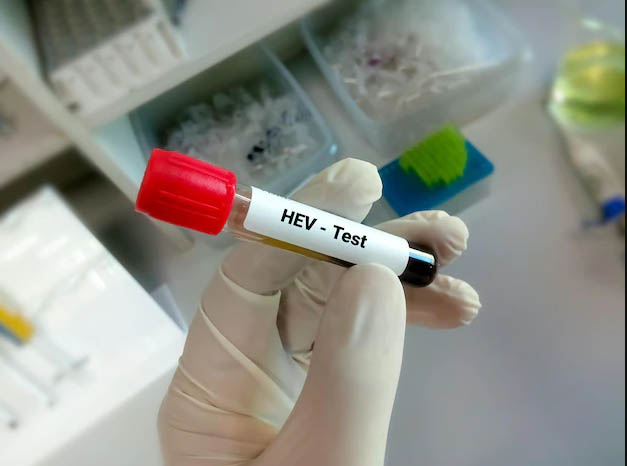Viral hepatitis: A major public health issue
If I were a snail, I might have lived inside its shell. Or in a bustling, noisy hive if I were a bee. To survive, however, as a person on this planet, I must maintain a delicate equilibrium between atoms, bacteria, viruses, and parasites. Therefore, I will discuss the causes, classification, and characteristics of the hepatitis virus in one of the world’s leading health issues, hepatitis (viral hepatitis). This will hopefully assist in raising awareness.
Viral hepatitis is considered a major public health issue. Viral hepatitis infects millions of people annually, causing significant morbidity and mortality. Viral hepatitis ends up causing 1.4 million deaths annually
Hepatitis: Inflammation of liver parenchyma is called hepatitis.

Causes:
1 . Infectious agent
Viral: = Classical hepatitis viruses/ hepatotrophic viruses
i.HAV. Hepatitis A virus affects 90% of children in high endemic regions.
The World Health Organization (WHO) estimated that 1.3 million people died due to hepatitis in 2015, and 1 in 3 people in the world have had infections with either hepatitis B or hepatitis C.
ii. HBV- Reportedly, infection rates show that 2 billion people are infected with the hepatitis B virus. Chronic Hepatitis B and C infection can cause liver damage that includes liver fibrosis, cirrhosis, hepatocellular carcinoma, and features of portal hypertension.
iii. HCV-185 million people are with infected the hepatitis C virus
iv. HDV
v. HEV- 20 million people are infected with the hepatitis E virus.
vi. HGV
Other viruses that cause hepatitis:
i. Herpes simplex virus ii. Epstein-Barr virus iii. Cytomegalovirus iv. Yellow fever virus v. Rubella virus vi. Some of the Enterovirus Infect the liver and infects other sites in the body.
b. Bacterial: i. Leptospira ii. Treponema iii. Mycobacteria
C. Parasitic: i. Toxoplasma ii. Amoeba
- Non-infectious agents: i. Biliary obstruction ii. Primary biliary cirrhosis iii. Wilson’s disease iv. Drug hypersensitivity.
About Hepatitis A Virus
The Hepatitis A Virus causes hepatitis A.

properties:
- A member of the picornavirus family is also known as enterovirus 72.
- Single-stranded RNA genome.
- Nonenveloped icosahedral nucleocapsid.
- Highly infectious but less virulent.
- Replicates in the cytoplasm of the cell.
- Size: 27-32 nm.
- It has one serotype.
- Short incubation period, self-limiting, less complication.
- It is resistant to acid, 20% ether, pH I for 2 hrs and temp. 600C for I hr.
- It is destroyed by autoclaving, boiling for 5 minutes, and dry heat. UV ray, formalin and chlorine.
Transmission & epidemiology:
I. Transmitted by the faecal-oral route. - Human is the reservoir.
- Children are the most frequently infected group.
- Outbreaks occur in summer camps and boarding schools.
Pathogenesis:
Contaminated food and water
The virus enters through the mouth
Multiplies in intestinal epithelial cells
Bloodstream
Spread to liver
Immune attack by cytotoxic T cells against viral Ag
The infection is cleared
No chronic infections
Clinical findings :
★ Most HAV infections are asymptomatic.
- Fever 2. Anorexia
- Nausea 4. Vomiting
- Abdominal pain 6. Pale faeces
- Dark urine 8. Jaundice
Laboratory Diagnosis :
Identification in cell culture :
It is possible but not available in the clinical Laboratory
Detection of virus :
blood
The virus appears in the blood early in the disease and disappears within two weeks before the appearance of symptoms.
Stool
The virus appears in the stool two weeks before to 1 week after the appearance of symptoms.
=By immunoassay or PCR.
Serological procedure :
*Anti – HAV LGM:
It appears in the acute phase and confirms the diagnosis of hepatitis A.
Peaking two weeks after elevation, enzymes decline to non-detectable levels within six weeks.
- Anti – HAV LGM.:
It appears soon after one set of the disease and persists for decades. It indicates immunity to HAV.
. Test for abnormal liver function :
a. Serum bilirubin
b. ALT. AST
c. Alkalise phosphatase
d. Serum albumin
e. Prothrombin time.
Prevention:
- Vaccination preexposure
- Immune globulin within 14 days after Exposure
- Proper hygiene
- Purification of a water system
- Avoid contaminated food
- Treatment: No antiviral therapy is available.
Hepatitis E Virus
The course of HEV infection is generally similar to that of HAV.
Except :
- It is a member of the calicivirus Family.
- Young to middle aced adults are a frequently infected group.
- Outbreaks occur in special living situations.
- High mortality rate in pregnant women is 20%.
- Fulminant disease is more common than in HAV infection
Lab Diagnosis :
Anti HEV lgm.
Treatment :
There is no antiviral treatment and no vaccine.
TO BE CONTINUE THE NEXT ISSUE

